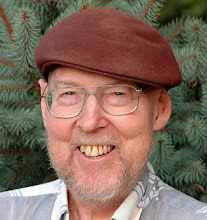A little after noon today I stopped at the park where the local farmers market does business. I talked to vendors and customers, taking notes for next week's column for our small town's weekly newspaper.
At the Coneflower Farm booth, there were red, yellow, and green tomatoes. I'm familiar with red and yellow varieties but who would want to buy green tomatoes in August? If it were late in the fall and the tomatoes were picked to prevent freezing., I could understand a customer might buy them in hopes that they would ripen. But August? I asked Dennis Zehr from Coneflower Farm about the green tomatoes.
"We sometimes get requests for green tomatoes from customers who want to make fried green tomatoes," he sad. "Usually it's later in the season but I had accidentally knocked these two loose from a vine. I brought them along in case someone wanted green tomatoes."
The best vendors at farmers markets get to know what customers want. It's a business with low margins and the best farmers grow the produce that the most of their customers want and also keep an eye out for what the least of their customers want too.
As someone with a disability who has been on the receiving end of nonprofit services and also spent a career in nonprofit leadership, I know that clients of nonprofits want both the most and the least treasures from a nonprofit.
Patients want the doctor to do a great job on their hip replacement surgery and a day later, when they turn on the call light, they want a personable nurse's aid to help them turn over in bed.
Who's more important? The doctor or the nurses' aid?
Almost everyone would say the doctor is the source of the greatest treasure (that new hip) and yet it's the nurse's aid who spends more time with the patient and is likely to know the patient loves fried green tomatoes.
A leader who wants his or her nonprofit to thrive must cultivate an organization that produces big treasures and little treasures.
Saturday, August 11, 2007
Subscribe to:
Comments (Atom)

